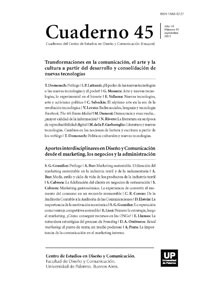La naturaleza estratégica del proceso de branding
Abstract
Branding -creation and strategic management of a brand- gained notoriety in the 90s joining the academic debate and professional activity of the disciplinary field of design and marketing. The fact of being both strategical and tactical caused some confusion about the branding nature. This debate has become in a theoretical reflection on the new territory and explore the activity surrounding the construction of a brand in an attempt to find theoretical perspectives to help understand the process. In doing so, it examines the concept of brand as a production and imaging bipolar system, and explores the stages of brand development in parallel with the strategic planning process. Finally, we analyze the influence of different schools of strategic thinking to discover the new frontiers facing this paradigm.
References
Aaker, D. (1996). El éxito de tu producto está en la marca. México: Prentice-Hall.
Borja de Mozota, B. (2003). Design management: using design to build brand value and corporate innovation. New York: Allworth Press.
Davis, S. (2002). Brand Asset Management: Driving Profitable Growth Through Your Brands. USA: The Jossey-Bass Business & Management Series.
Mintzberg, H., Ahlstrand, B. y Lampel, J. (1999). Safari a la estrategia: Una visita guiada por la junga del management estratégico. Barcelona: Ediciones Granica.
Valdés de León, G. (2005). Cinco posibles maneras de mirar la imagen. En, XIII Jornadas de Reflexión Académica en Diseño y Comunicación 2005. Formación de Profesionales Reflexivos en Diseño y Comunicación. Facultad de Diseño y Comunicación, Universidad de Palermo. Buenos Aires, pp. 261-269
Watkins, T. (1986). The economics of the brand: A marketing analysis. USA: McGraw-Hill.
Business Dictionary. Disponible en: http://www.businessdictionary.com/definition/branding.html
Los autores/as que publiquen en esta revista ceden los derechos de autor y de publicación a "Cuadernos del Centro de Estudios de Diseño y Comunicación", Aceptando el registro de su trabajo bajo una licencia de atribución de Creative Commons, que permite a terceros utilizar lo publicado siempre que de el crédito pertinente a los autores y a esta revista.


